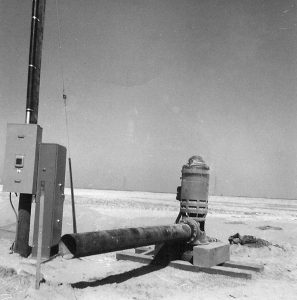Some Clouds on Horizon
Our California farmland is an ideal environment for the crops that we grow with many sunshine filled days and until recently abundant water supply. California has been experiencing a protracted drought which we acknowledge as lengthy and significant. According to recorded statistics most droughts last only for a season or two or three. The previous record was way back in the dirty thirties . The current 2006-2017 drought has eclipsed this infamous Dust Bowl event by 3 years in length and counting.
Supply
- Natural rainfall, which occurs strictly during winter months and is of limited supply for sustaining annual range grass and desert shrub. It is not relied upon in our arid valley and must be augmented by irrigation.
- Managed resources imported from mountainous flows primarily to our North and East. This supply travels via canal and aqueduct, is subsidized and controlled by public government. It is used for flood control and is doled out to farmers and urban communities on an as needed basis. Cost effective but limited in scope.
- Natural aquifer aka ground water or the water table. This is our relied upon and only source option. Expensive but readily available.
…and Demand
These drought years coupled with growing needs have placed strain on the availability of surface water. With scarcity comes limits and many of those farmers who enjoyed the good fortune of cheap water in the past have been forced to drill wells for supplement as a matter of necessity. This in turn has placed an unprecedented burden on the aquifer. Whereas, the water table had been reliably stable over time we are witnessing a certain fragility. The acceleration of diminishing water quantity and water quality degradation in terms of mineral content is cause for alarm. Also, as an extreme, sea water ingress and land subsidence.
Reaction
Alarm bells have captured the attention of environmentalists, media, and regulators scrutinizing where water goes, who is to blame, and corrective ideas. Politics and economics are a complicated tangle but for sure, changes are afoot. In the short term we expect to see usage monitoring on a granular individual farm basis e.g. registering number of wells and reporting of outputs. In the future, regulatory restrictions and [reduced] usage mandates.
On a routine basis we monitor our local water table for fluctuation, measure outflow usage, and sample water quality so we are well aware of these issues first hand.
So, while we are seeing darkening clouds on the horizon we are hoping that they will result in much needed rain. Our response must be to comply with the mandates and adapting as necessary to remain viable.

We Californians are very aware of water being a scarce and expensive resource. For many years we personally have reduced our water consumption here in San Jose, primarily by letting our landscaping go dry during hot summer months. We haven’t put in a vegetable garden in years either. While we will have an outlier year periodically with lots of precipitation, I fear that will be the exception rather than the rule, and we will have to learn to live with diminished water supply.
Luckily the LLC is in a position to look toward the future and modify its business plan to accommodate environmental and other changes necessary to continue as a thriving business. This might even mean considering non-ag investment. Interesting opportunities abound.